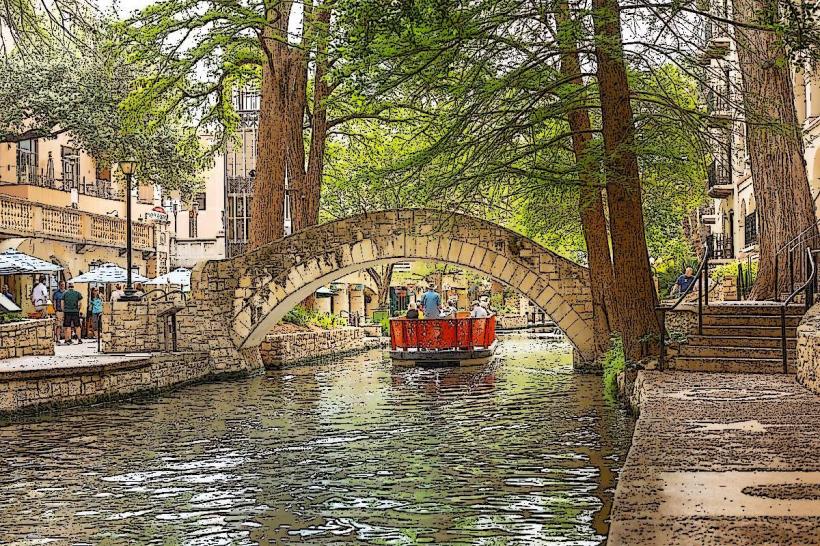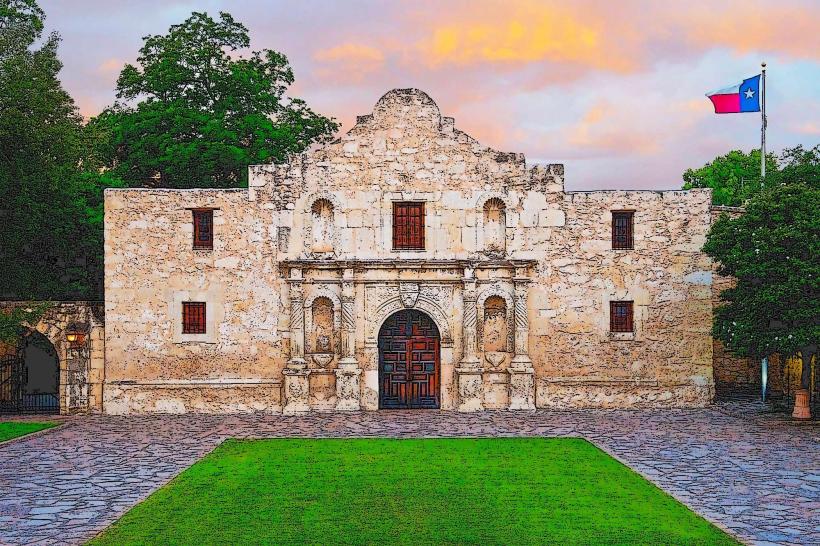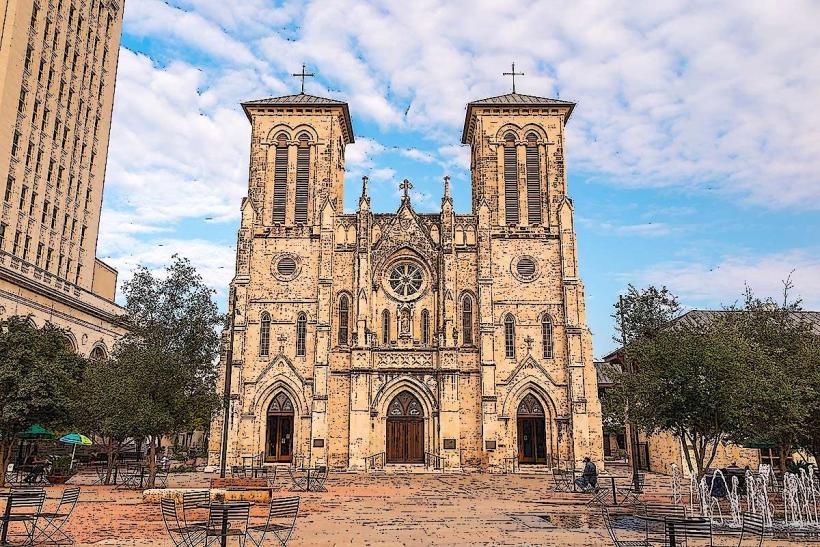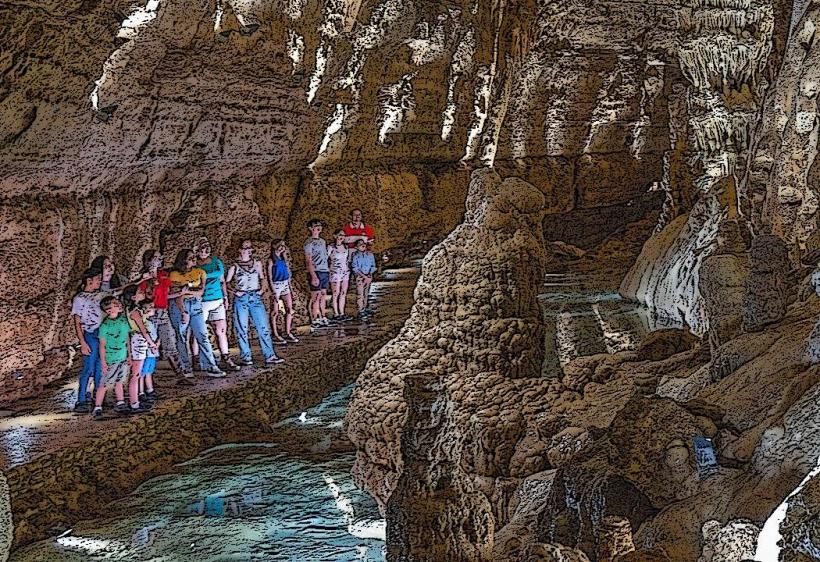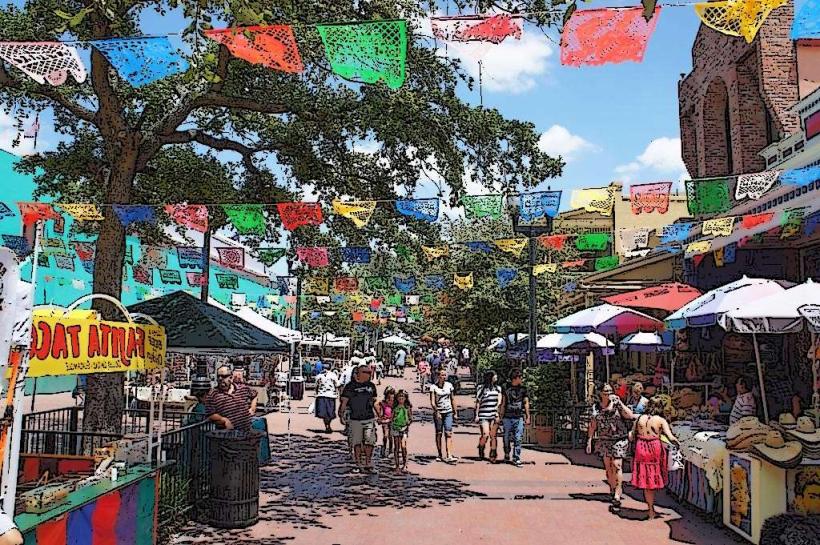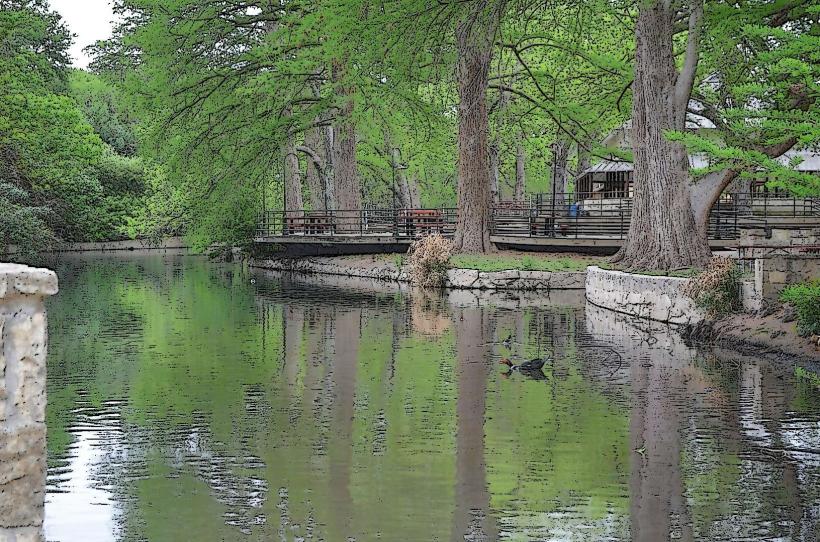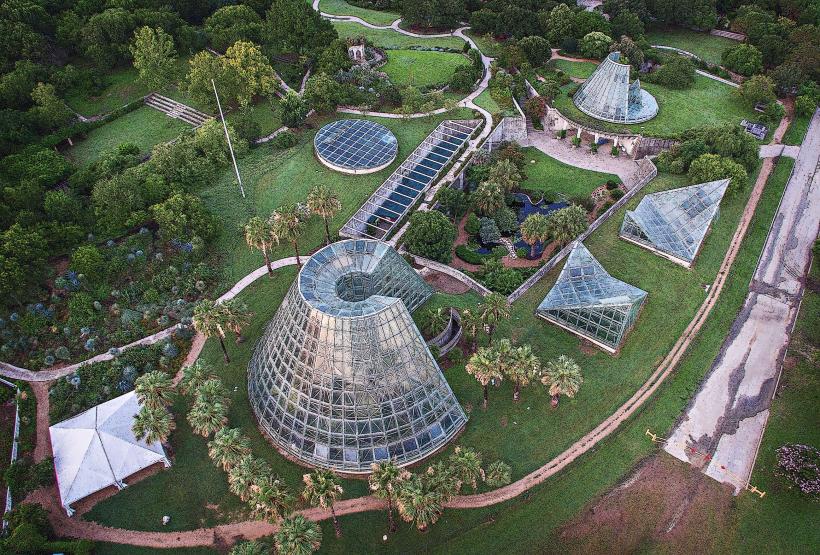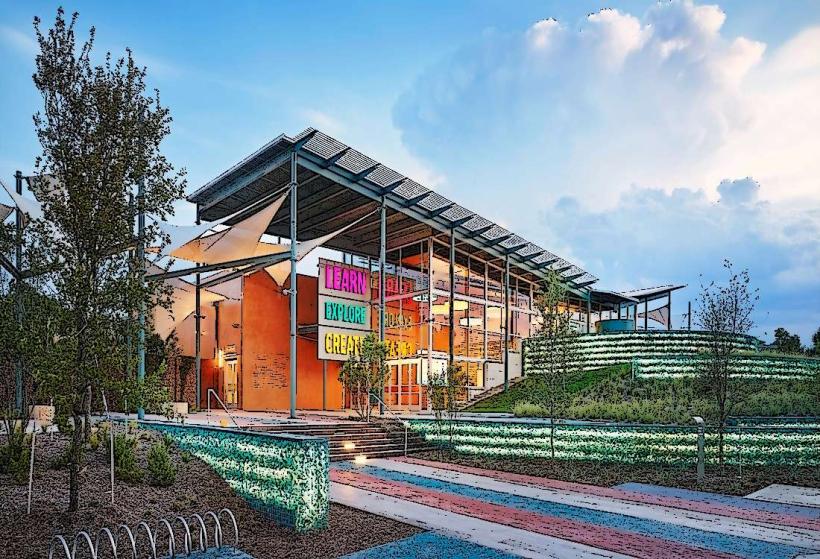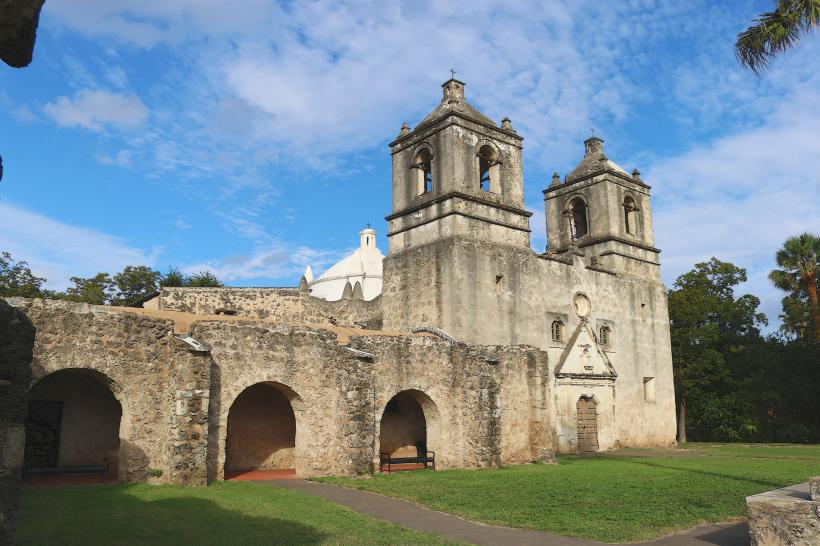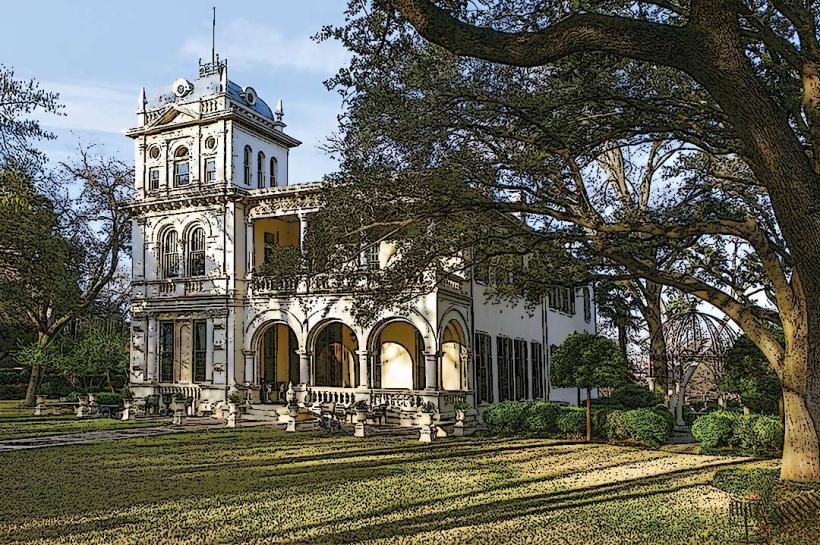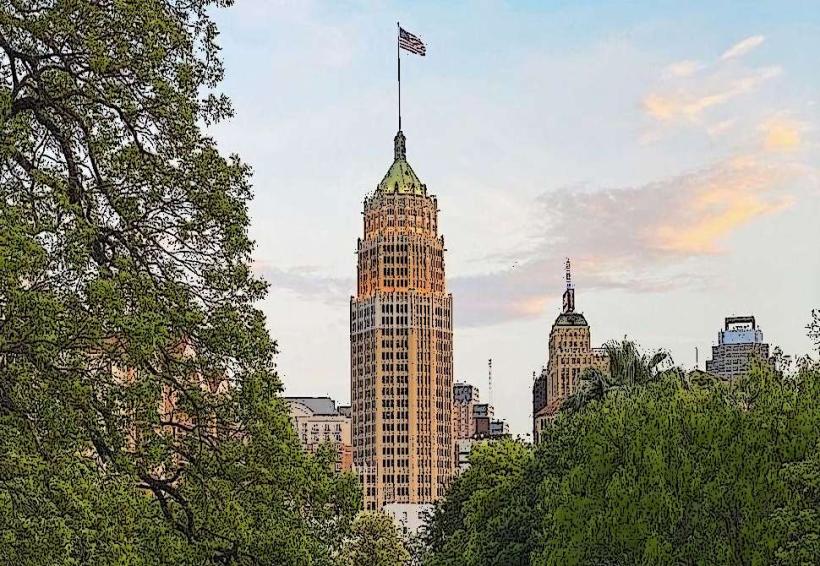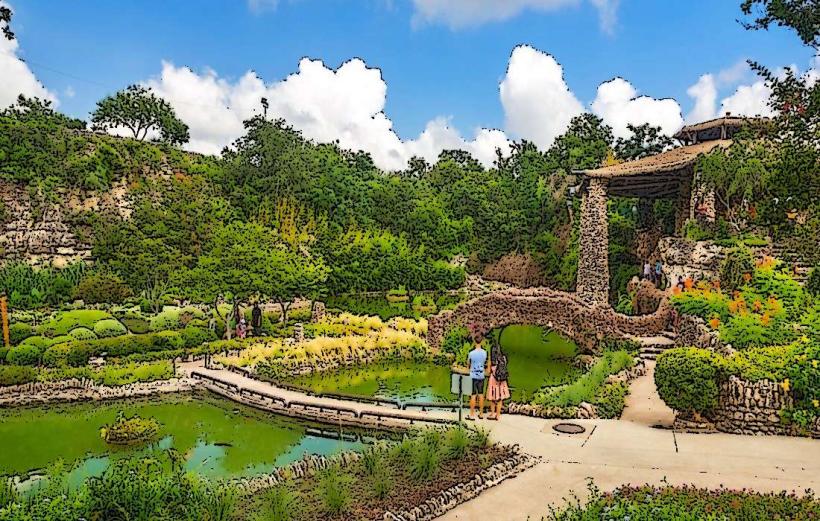Information
Landmark: San Antonio Missions National Historical ParkCity: San Antonio
Country: USA Texas
Continent: North America
San Antonio Missions National Historical Park, San Antonio, USA Texas, North America
The San Antonio Missions National Historical Park is a UNESCO World Heritage Site and one of the most significant historical and cultural landmarks in San Antonio, Texas. The park preserves and interprets the history of the five Spanish colonial missions that were established in the area in the 18th century. These missions played a key role in the spread of Christianity and European culture across the region, and they are integral to the history of Texas and the United States. Here's a detailed look at the park:
1. Overview and Importance
The San Antonio Missions National Historical Park encompasses four of the five original Spanish missions that were established along the San Antonio River. These missions were part of Spain’s larger effort to colonize and Christianize Native American tribes in the region. The missions also played a significant role in the establishment of San Antonio itself, which grew around these religious settlements.
The park preserves the architecture, artifacts, and stories of these missions, allowing visitors to understand the unique cultural and historical significance of the Spanish colonial period in Texas. In 2015, the San Antonio Missions became a UNESCO World Heritage Site, recognized for their importance in the development of European settlement in North America.
2. The Missions
The San Antonio Missions National Historical Park includes four of the five missions, each of which has its own distinct history and role in the broader story of Texas.
Mission San Antonio de Padua (1731): The first mission in the area, founded in 1718 (although it moved to its current location in 1731), is Mission San Antonio de Padua. This mission was established to convert the Coahuiltecans, a local indigenous tribe, to Christianity. The mission was secularized in the 1790s, and most of its buildings have since been abandoned or deteriorated. However, some parts of the original structure remain, and it is an important example of early mission life in Texas.
Mission San José y San Miguel de Aguayo (1720): Mission San José, often referred to as the “Queen of the Missions,” is the most well-preserved and arguably the most architecturally significant of the missions in the park. Founded in 1720, the mission was a thriving community that became a cultural and agricultural center. The church building is a stunning example of Spanish Baroque architecture, with its beautifully detailed facade and intricate carvings. San José also has the most fully restored buildings, including the convento (the missionary living quarters) and a large central courtyard.
Mission San Juan Capistrano (1731): Founded in 1716 and moved to its current location in 1731, Mission San Juan Capistrano was established to serve the local Coahuiltecan people. The mission played an essential role in the agricultural development of the region and was central to the early economy of San Antonio. Today, parts of the mission’s church, aqueducts, and irrigation systems can still be seen. The mission’s location near the San Antonio River also highlights the early importance of water management in mission life.
Mission Espada (1690): The oldest of the San Antonio missions, Mission Espada was originally established in 1690 but moved to its current location in 1731. The mission’s church, dedicated to Our Lady of Loreto, is still standing today and is one of the oldest stone buildings in Texas. The mission is particularly noted for its aqueduct system, which is still in use today for agricultural irrigation. The mission also contains remnants of the original structures and is located in a quieter part of the park, offering a peaceful atmosphere.
3. Mission Architecture and Layout
The architecture of the San Antonio Missions reflects the Spanish colonial influence on the region, blending European designs with local materials and the needs of the indigenous populations. The missions were designed as self-sufficient communities, with everything necessary for daily life—churches, homes, workshops, and farmland—housed within their walls.
Mission Churches: The most significant feature of each mission is its church. The churches were the spiritual and social centers of the missions, and their architecture ranges from simple and functional to grand and ornate, depending on the resources available.
Convento: The convento, or living quarters for the missionaries, was an essential part of the mission complex. These buildings often included living spaces, kitchens, workshops, and storage areas. In many cases, the convento was connected to the church and formed the central part of the mission.
Courtyards and Gardens: Each mission had a central courtyard, which was often surrounded by walls and used for communal activities, agricultural work, and relaxation. The gardens were also places of spiritual reflection, as well as practical areas for growing crops and raising animals.
Defensive Features: The missions were often equipped with defensive features, such as walls and watchtowers, to protect the inhabitants from potential threats. While the missions were intended to be peaceful, the region was subject to attacks from hostile indigenous groups, and later, from various European powers.
4. Cultural and Historical Significance
The missions represent a key moment in the history of Texas and the broader southwestern United States. The role of the missions was not just religious; they were also centers of cultural exchange, agricultural innovation, and community life.
Cultural Exchange: The missions served as places where Spanish settlers and indigenous people came into contact, leading to cultural exchanges. The indigenous tribes, many of whom had been living in the area for centuries, learned European farming techniques, religious practices, and European architecture, while Spanish settlers gained knowledge of indigenous customs, land use, and agriculture.
Economic Development: The missions were central to the economic development of the region, with many missions running large farms and producing goods such as crops, livestock, and leather. The missions also played a role in the development of the region’s infrastructure, including water management systems, irrigation systems, and roads.
Native American Life: While the missions were primarily established to convert Native Americans to Christianity, they also provided a structured way of life for the indigenous peoples. Mission life often involved a rigid daily schedule that combined religious observances with agricultural and craft work. Over time, the mission communities became centers of education and socialization, but they also contributed to the disruption of traditional indigenous cultures.
5. Visitor Experience
The San Antonio Missions National Historical Park is a popular destination for history enthusiasts, tourists, and those interested in exploring the cultural roots of Texas. The park offers a variety of experiences:
Self-Guided Tours: Visitors can take self-guided tours of the missions, with signage and brochures that explain the history of the site and its significance. The park’s website also offers digital resources, such as maps and videos, to help visitors plan their visits.
Guided Tours: The park offers guided tours led by park rangers or volunteers who provide in-depth knowledge of the history, architecture, and cultural significance of the missions. These tours are an excellent way to deepen one’s understanding of the area’s history.
Interpretive Exhibits: Inside the park’s visitor centers and mission churches, there are interpretive exhibits that provide a wealth of information on the history of the missions, the indigenous peoples who lived there, and the role the missions played in the development of the region.
Preservation and Conservation: Ongoing efforts to preserve and restore the missions are a key part of the park’s mission. Many of the mission buildings and structures have been carefully restored to ensure that they remain standing for future generations.
6. Recreational Activities
Walking and Biking Trails: The San Antonio Missions National Historical Park is home to a network of trails that connect the different missions, making it easy for visitors to explore the area on foot or by bike. The trails provide beautiful views of the San Antonio River and the surrounding landscapes, and they offer an immersive experience in the park’s natural beauty.
Special Events: The park hosts a variety of events throughout the year, including cultural festivals, historical reenactments, and educational programs. These events provide visitors with a chance to experience the missions in a dynamic, interactive way.
Conclusion
The San Antonio Missions National Historical Park is a powerful reminder of the region’s colonial past and the lasting impact of Spanish culture in Texas. The park not only preserves the physical structures of the missions but also tells the stories of the people who lived and worked there, including the Spanish settlers, the missionaries, and the indigenous peoples. Its significance as both a cultural and historical site cannot be overstated, and it offers a rich experience for anyone interested in the history of Texas and the southwestern United States.

